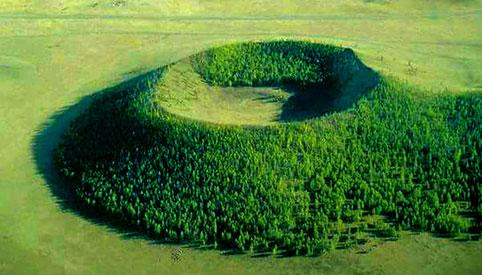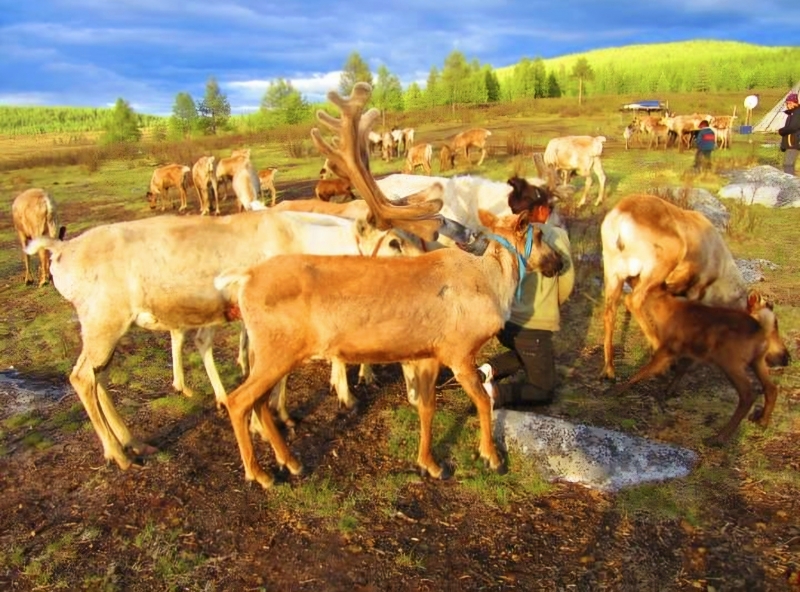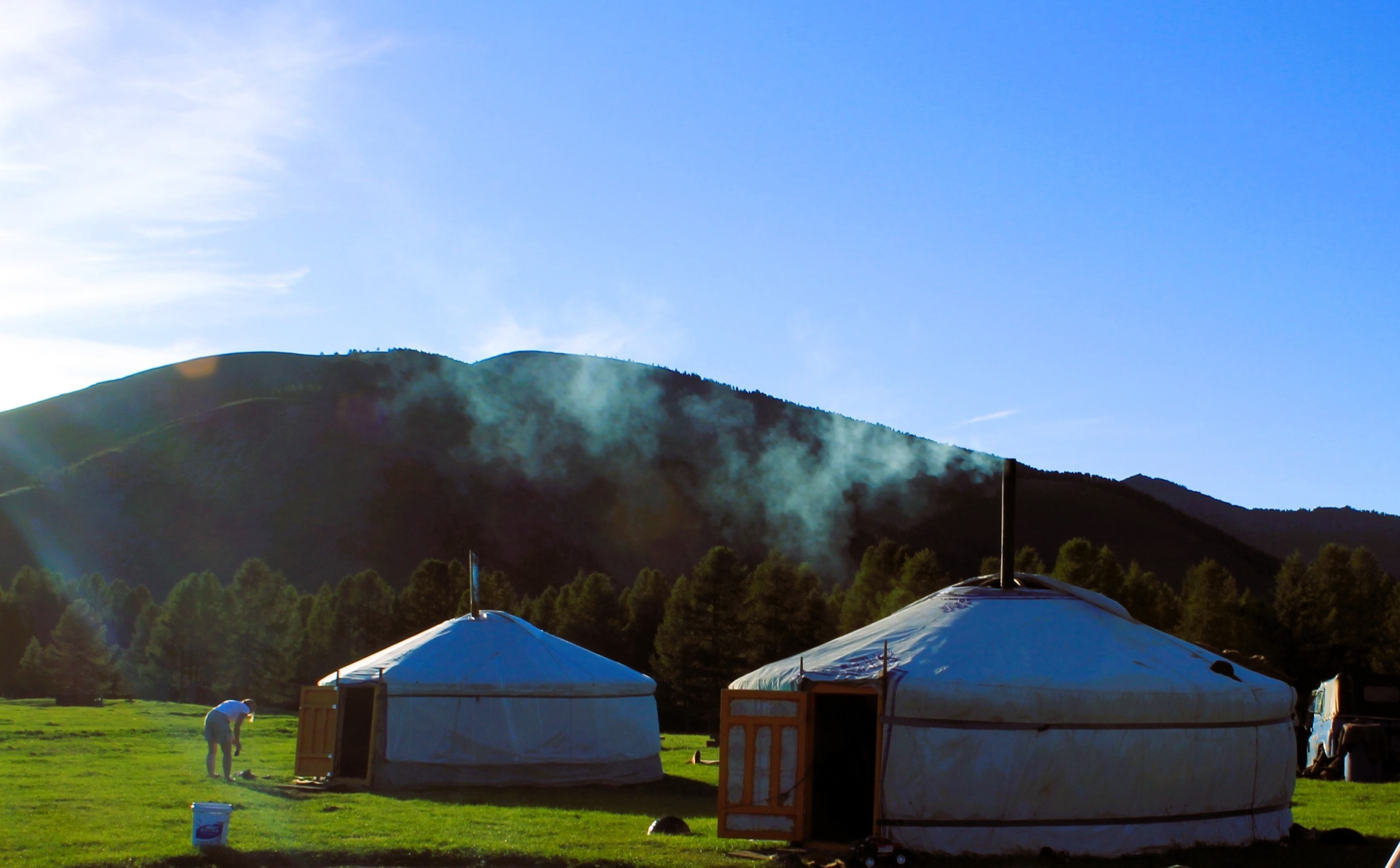Destinations
Khuvsgul Lake
One of the top attractions of the Northern Mongolia is Khuvsgul Lake. The extraordinary lake lies within boundaries of the Khuvsgul National Park. The area of Khuvsgul Lake, raised well above sea level, is 2760ms. Its length is 136 km and width 36.5 km. The outflow from Khuvsgul Lake drains into the Eg River and Selenge River and finally reaches Lake Baikal in Siberia. This lake is revered to all Mongolians and is known as "Mother Sea". Many Mongolians are proud to call this lake as "Blue Pearl of Asia ". Untouched by industry and modern urban life, the Khuvsgul Lake's water is unbelievably clean. The scientists have announced that Lake Khuvsgul contains two percent of the world's fresh water resources. This is a place in Mongolia where one can get sense of total unspoiled wilderness. The area is paradise for outdoor travelers and there are plenty of room for activities like hiking, birding, fishing, horseback travel and kayaking.
“MOTHER LAKE “-THE LEGEND OF LAKE HUVSGUL
A very long time ago an old woman who owned 5 black goats lived on the side of deep valley in the mountains of northern Mongolia. There was only one well in that area. Every day she comes at the well and waters her 5 goats. One day, she forgot to close the lid and the valley was filled with water. During this time, a strong guy came there and cut the top of a nearby mountain and out it on top of the well. “Uran Dush” mountain top stayed forever flat and the top of the mountain used as a lid formed “Hadan Hui” island in the middle of the lake. The original wooden lid of well float to the middle of the lake and formed “Modon Hui” island, the lake’s tree covered navel. Since then locals called voluminous water flowing out from the well as Huvsgul Lake.


Amarbayasgalant Monastery
Amarbaysgalant, one of the most important monasteries of Mongolia, located in the foot of Burenkhaan Mountain. It was built by Manchu Emperor between 1727-1736 with more than 40 temples in honor of Saint Zanabazar, the first Bogd and the great artist. The architectural construction of the monastery is amazing. The main style is Chinese while it combines little Tibetan and Mongolian architecture.The main protector of the monastery is Dorjjugd. It seems to be that because of this protector a conflict with the Dalai Lama as arisen. According to the latter the practice of worshipping this deity would be harmful. According to an informant this deity would keep the Gelupa (also referred to as the Yellow sect in Buddhism) pure and so protect it from influence from other Buddhist schools. Since the Dalai Lama, although himself part of the Gelupa, is the worldly and spiritual leader of the Tibetan people he has tried to bring the different traditions within Tibetan Buddhism together, instead of emphasizing its differences. Furthermore it is said that this practice would not just try to keep the Gelupa pure, but by doing this trying to damage the other traditions. During 1930s the monastery was destroyed by the communists. The monastery was being restored by UNESCO from 1975 until reopening in 1990. At the present moment 30 monks live here within the age range of 7-90. There is big number of young monks (13) in between the age of 7 and 13, who have for a great part been picked up from orphanages around Mongolia. In the main temple is a life-size statue of Guru Deva Rinpoche who is the formal abbot of the monastery although he is only there a short time a year. From 1992 he has been putting effort in restoring temples, statues and scriptures. A couple of new monuments – golden Buddhist statue and a stupa –are situated on the hills behind the monastery. You could continue hiking up the mountains for even better views of the valley.
.jpeg)
.jpeg)
Uran Togoo Mountain
About 60 km directly west of Bulgan city is the extinct volcano of Uran Uul and nearby Togoo Uul, now part of the 1600 hectare Uran-Togoo Tulga Uul Natural Reserve in the sum of Khutag-Ondor. Trails to the top of the relatively unimpressive volcano lead up from the west side, which also has some nice camping areas. The Uran-Togoo Tulga Uul Natural Monument is a national protected area in the Bulgan Province of Mongolia. This mountain ranks as 4th highest mountain in Bulgan province. Uran Uul is a pretty good place to break the journey to Khuvsgul. A smaller area was initially protected in 1965 by State Great Khural Resolution No.17. In 1995, it was designated as a monument by Parliament Resolution No.26 with an area of 5,800 hectares.


Tsaachin / Reindeer Herders
Reindeer people – is a nation, who keeps reindeers, which inhabitants in the northern part of Mongolia. The entire existence is based on their herds of reindeer, which provide milk for making cheese, antlers for carving and medicine, transport (the makes can carry up to 90kg of weight) and, very occasionally meat. The Tsaatan are part of the Tuvan ethnic group, which inhabits the Tuvan Republi of Russia, and they speak both Tuvan and Mongolian. There are only about 400-500 Tsaatan in total spread over 100.000sq km of northern Mongolian taiga landscape. They are truly nomdic8 often moving their small encampments in the search of the special type of grass and lichen loved by the reindeer (of which there are less than 1000). The tsaatan don’t use gers, but prefer urts, similar to Native American teepees, traditionally made from birch bark but now from store-bought canvas.) Shamanism plays an important part in Tsaatan; the shaman also acts as a healer, providing traditional remedies for ailments. When the president of Mongolia visited the Tsaatan in winter of 2012, he decreed that elders and families with many children will receive a stipend from the government. Before communism and forced collectivization the Tsaatan were completely self-sufficient with enough reindeer per family to feed themselves. These days, in autumn, the Tsaatan gather berries, pine nuts and wild potato, and fish and hunt when possible as further means of subsistence. Reindeer are also used as riding and pack animals in the rugged taiga environment the Tsaatan call home. Said to have been domesticated several thousand years ago, reindeer play a central role in the spiritual, socio-economic, and linguistic traditions of the community.


Uushigiin Uvur Deer Stone
This place is situated on southeastern sunny side of rocky Mount Uushig 17km west from Murun, Huvsgul Aimag and about 3km from northern bank of Delger River in Burentogtokh Soum. You can find khirgisuurs, square burials and 14 deer stones in a single area at the same time. This memorial contains the most clearly depicted deer stone in Mongolia. These deer stones were aligned from north to south in a single column. Each stone is 3-20m distant from each other and was made of tetrahedral granite stone in reddish color. A deer, an arch, a shield, a horse, a knife, the moon, the sun and a mirror figured belt were engraved on the stones. These oblong-shaped stone monuments are 1,5-4,8m high, 0,4-1m wide and 20-50m thick. Total of 109 deer figures as well as some human figures were carved on 14 stones.





